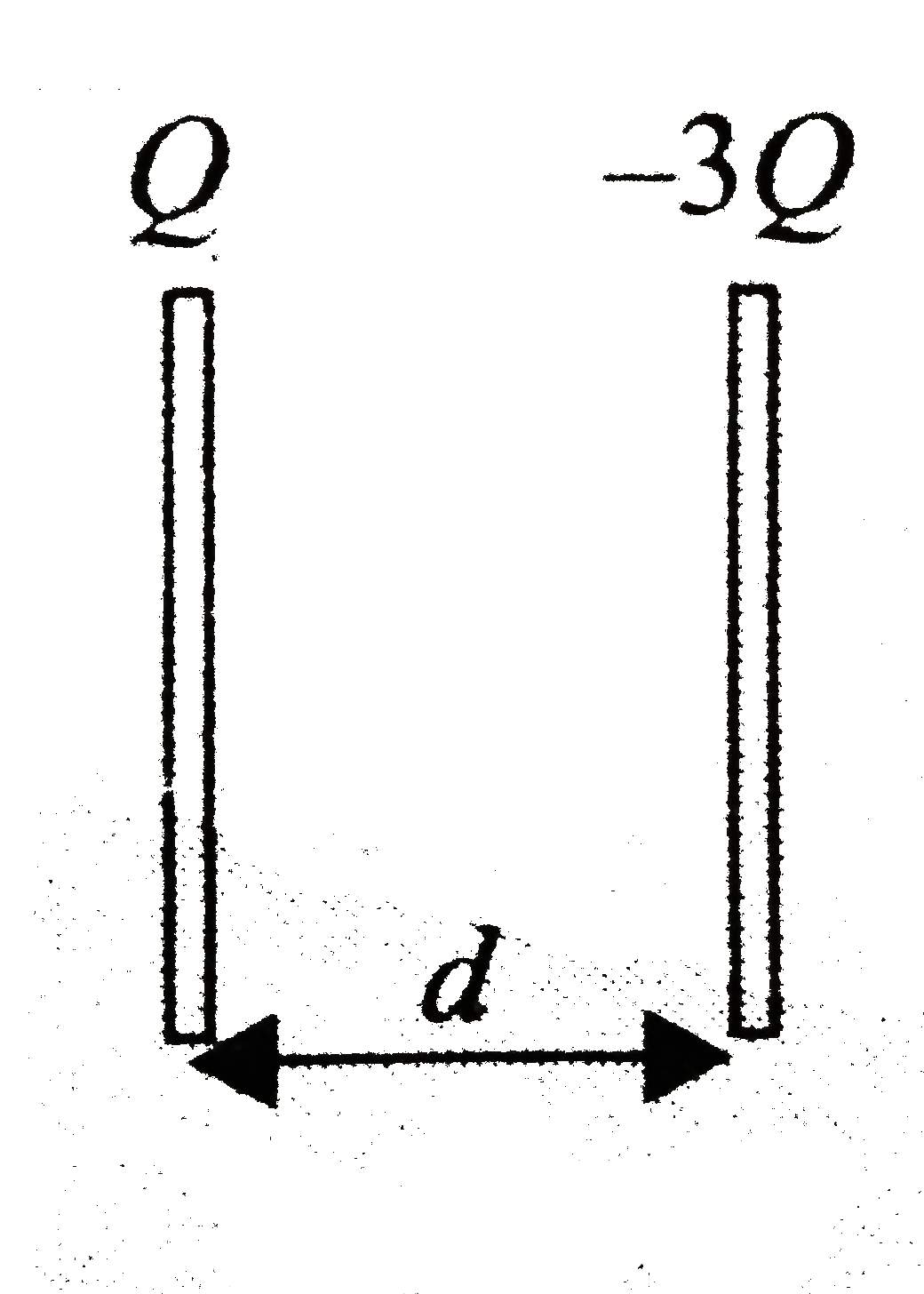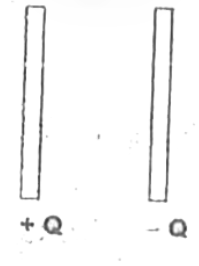A parallel plate capacitor C has a charge Q. The actual charges on its plates are
Q,Q
Q/2, Q/2
Q,-Q
Q/2. - Q/2
The correct Answer is:C
Similar Questions
A parallel plate capacitor has capacitance C. If the charges of the plates are Q and −3Q, find of the

i. charges at the inner surfaces of the plates
ii. Potential difference between the plates
iii. charge flown if the plates are connected
iv. energy lost by the capacitor in (iii.)
v. charge flown if any plate is earthed.
View SolutionA parallel plate capacitor has capacitance C. If the charges of the plates are Q and −3Q, find of the

i. charges at the inner surfaces of the plates
ii. Potential difference between the plates
iii. charge flown if the plates are connected
iv. energy lost by the capacitor in (iii.)
v. charge flown if any plate is earthed.
View Solution
Knowledge Check
A.P.D. of V volts is applied across the plates of a parallel plate capacitor having plate area A. if Q is the charge on its plates and K is the dielectric constant of the medium, between the plates, then the plate separation is given by
Ad=AKε0V/QBd=Kε0V/QCd=AKε0Q/VDd=Kε0Q/VA parallel plate capacitor is charged. If the plates are pulled apart
Athe potential difference increasesBthe capacitance increasesCthe total charge increasesDthe charge and the potential difference remain the sameA parallel plate capacitor is charged and then isolated. On increasing the plate separation
A Charge Potential Difference Capacitanceremains constant remains constant decreasesB Charge Potential Difference Capacitanceremains constant increases decreasesC Charge Potential Difference Capacitanceremains constant decreases increasesD Charge Potential Difference Capacitanceincreases decreases increases
Consider a parallel plate capacitor having charge Q. Then,

View SolutionA parallel plate capacitor is charged. If the plates are pulled apart
View SolutionA parallel plate capacitor having area A is given a charge +q and −q on its plates, Two plates exert force of attraction given by.........
View SolutionA parallel plate capacitor is charged and then isolated. On increasing the plate separation
View SolutionA parallel plate capacitor is charged and then isolated. On increasing the plate separation
View Solution
